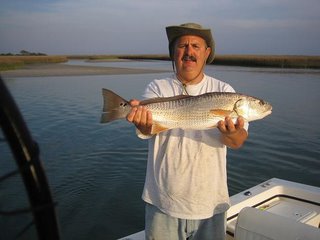Column - October 9, 2006
I’ve been scuba diving for over 25 years. I’ve been fishing for more than … well, a long time by any account. Some days I do both -- that really puts a smile on my face.
While scuba diving, I really have a chance to explore the environment that supports the fish. Oh sure, when someone first starts diving all they notice is that there are some really big fish, and "Hey this air tastes pretty good, think I’ll have another."
After a few dives, the diver begins to notice more and more about the wonderful world under the sea. First the novice begins to notice some of the smaller fish within their hiding places. Later, the diver takes note of the fish’s habits and preferences -- like where they hide, what direction they swim in relation to currents, structure and bottom types. The experienced diver will even note what species seem to hang out together.
Armed with all this information, a diver begins to understand how to be a better fisherman.
Many fish love structure. Hang around a fisherman long enough and you’ll here them talk about structure. By structure, they mean anything that breaks up the bottom. Ledges, reefs, sloughs, rock piles, oyster bars, and points of land all are structure.
Small fish use these structures to hide. Bigger fish are attracted to such places in search of a meal, compliments of the smaller fish. And you correctly guessed by now, the angler is attracted to structure by the bigger fish they find there.
The first time I dove on an artificial reef, I soon realized I had been fishing all wrong. This particular reef was made from an old barge. The top of the barge was there, but had been mangled, as was part of the hull. Diving on it helped me see how it was laid out and, more importantly, where the flounder lay.
I had always fished the middle sections and had some luck, but nothing spectacular. I noticed on my dive that the flounder where all stacked up around the ends of the barge. They were in the sand and facing the wreck, just waiting for a smaller fish to round the end of the wreck and get within grasp. Next time I fished there, armed with this new information, I caught my limit of eight flounder.
Scuba has helped me with ledges and rock piles as well. I enjoy scuba diving on its own merits; however, using it to enhance my fishing catch is just plain SWEET.
Catching report
With the water temperatures hovering near 70, the fall bite is really picking up! Inshore, speckled trout, red and black drum, flounder and spots are biting well. The trout are feeding on top water baits early and late in the day. Flounder and drum are making the most of the finger mullet bounty, so use them for bait.
The king bite has been hot. The fish are moving closer and closer to shore. Hopefully the smokers will be near the beach this weekend for the King Mackerel Tournament sponsored by the Topsail Offshore Fishing Club. They are feeding on live pogies and will bite cigar minnows and other natural baits as well. Some very nice size Spanish are being caught on the ledges and reefs 3 to 5 miles off shore. The false albacore seem to have disappeared, though.
Further out in the 15 to 30 mile range, grouper and black sea bass have been a staple these past few weeks. Squid and Spanish sardines are working well; live pogies and pin fish will get the grouper bite sizzling. too.
Wish me well in the tournament this weekend.
Tight lines to all!


0 Comments:
Post a Comment
<< Home